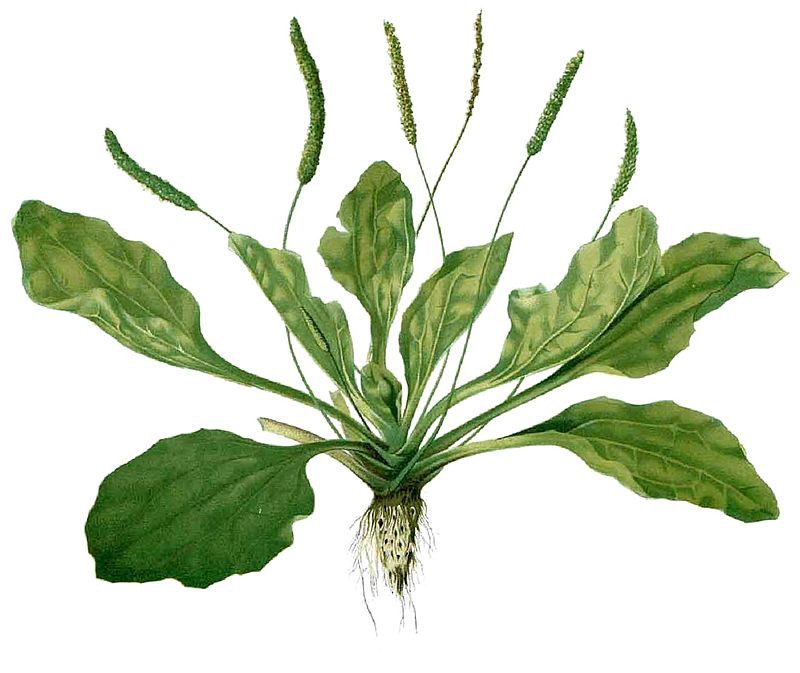Name: Plaintain, Ribwort (Plantago)
Location: Anywhere, usually grass verges, pathcracks, fields and park pathways
Months: All year round
Edible Parts: Leaves, Seeds

More Information
Plantain is a common wild edible found all over the UK. The three main types in the UK are Major, Media and Lanceolata but coastal regions will also discover maritima and ponds/lakes may be blessed with Aquata. Plantain has trade mark ‘ribs’ (hence the name ribwort) along the underside of the leaf which are the prominent veins of the leaf. they run parrallell along the leaf and do not intersect. When the leaf is pulled apart the stringy material inside the vein is revealed.
Plantain is not only edible (best eaten when young and fresh) but it is also used in herbal medicine as it is packed full of anti histamines. this makes it useful as herbal tea to treat hayfever or infused in oil to treat stings and other skin reactions – in particular nettle stings.
The seeds of plantain are highly nurtitious if you catch them at the right time of year.
How to Make a Plantain Oil Infusion (for topical use)
Collect your plantain leaves (any variety) and roughly chop.
Spread the leaves our on a tray and dry them out, Ideally you would use a dehydrator at 45 degrees or less for this task but if you do not have one then you can sun dry or use your oven on its lowest setting with the door ajar. Be careful not to burn the leaves (they will turn brown is overheated).
Once fully dried, stuff as many leaves as you can into a clean dry sterile jar. Then top up with olive oil (or another base food grade oil) and ensure the leaves are submerged and there are no air gaps.
Leave in a cool dark place for 3-6 months to infuse. Strain before use.
